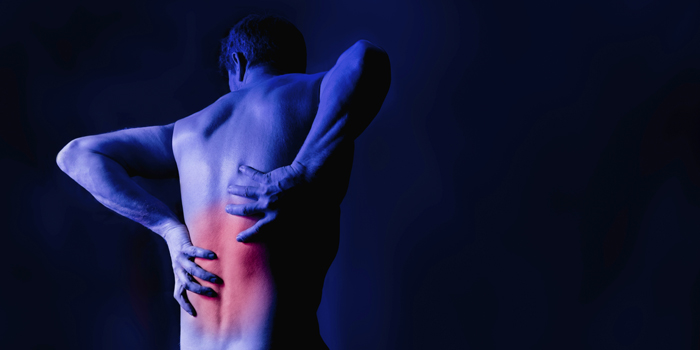
We get a lot of questions on the Q&A about training through injury, especially lower back issues up to and including disc injuries. I am not a doctor and cannot give medical advice, but I am a professional coach and can and will give training advice.
Having a disc injury to your lumbar region is not the end of your lifting career. As a matter of fact, this is exactly what turned Vincent Dizenzo into one of the best benchers in the world.
If you train smart and do the proper rehab/prehab there is a strong chance you will return to the platform and be stronger that you were before the injury (depending on the severity). Don’t give up hope.
RECENT: Big Squat, Big Bench, Big Deadlift — Big Air
I have trained many people over the years with disc problems and a large percentage got healthy again without surgery. Obviously certain cases require surgery, and for those, I am out of the equation until the procedure is over and they are cleared to begin training.
For those who are not in a full rupture there is a lot we can do in the gym to help it get better and make progress on other lifts. I currently have a training partner who has an extrusion in the L4-L5 area and a team member who presents with disc issues but has not had an MRI to confirm. We are treating them exactly the same.
The injured two in question: the Chief and Laurie
I am going to give you the exact template they are using NOW in the acute phase of the injury.
First off, if you have or suspect you that have a disc injury, see a doctor. This advice is what we did with MY clients and is in no way intended to replace medical advice. If you do this, it is at your own risk.
Now, with the legal stuff out of the way, let’s look at disc issues.
There are several types each with their own precautions and treatments. They range from protrusion to full herniation (layman’s terms = fully blown out disc). So, what do we do for training and prehab in the case of anything other than your disc fully crapping the bed? First, we do no lower body work at all. Avoid anything that involves the SI joint 100% while in the acute phase. The acute phase is the point near the injury — when it just happened. This is the worst part.
You are getting symptoms and pain and lifters feel as though their lives are over. I am here to tell you that your life and lifting career is not over. It is in a developmental stage. You now need to develop into a smarter lifter who is not only focused on PR’s but also on long term health. Being a competitive lifter and having concern for long term health are sometimes mutually exclusive points of view. No more.
WATCH: Table Talk — How to Maintain a Healthy Spine
So what can we do if we need to totally avoid SI joint involvement? Squats, bench presses and deadlifts are all off the table. However, there are many things that you can do to build your bench while in the acute phase.
Here is a short list:
- Floor Press
- Incline Presses
- Ab/torso work (I never say core)
- Dips
- Pullups (maybe)
- Pulldowns
- Chest Supported Rows
- Almost all tricep/bicep/delt bodybuilding accessory work
- Grip work (this will carry over later to your deadlift and other lifts)
This is a short list but as you can see, it covers the bench press pretty well.
Why not take this time to get your spine back in platform ready shape and build a strong torso and a huge bench? The floor press is a great bench builder and if you train the shit out of it, your bench will explode when you are ready to add your lower body back and the corresponding hip drive that comes with putting your feet on the floor. To learn more about hip drive, see my previous log posts on this.
Below is the warm-up that my training partner, the Chief, and team member Laurie are doing now. It was designed by Kevin Cann, my head coach who is a movement/rehab wizard. This has been approved by the PT and the doctor as well.
Warm-Up:
*Reps x 8, Repeat 2-3 times
- 90/90 Breathing
- Banded Leg Lowers
- Quadruped Hip Extension
- Quadruped T-spine Rotation (squeeze foam roller between knees)
- Bear Crawl (may not be appropriate for all)
- ½ Kneeling Hip Stretch Kettlebell in front
- Tall Kneeling Kettlebell Bottoms up press or hold
Once this is done it’s time to work. Below is the current four-week block I designed that they are using while in the acute phase. This may change day to day as symptoms arise.
As an example, the Chief has an increase in pain while doing pullups, so we substituted Scap Pullups in place one week, and used pulldowns another.
(As a nice side note, we are seeing a good amount of muscle being developed in a very short time in their upper bodies.)
*Click on each week to enlarge.
A few notes:
Dizenzo Bench: This is something that I saw Vincent do years ago at TPS when he could not put his legs on the floor. He got two folding chairs and put his legs on them while he benched. I figure it worked for him, so we’ll try it.
Seesaw Press: Sit on a bench with a very slight incline and hold two dumbbells overhead. Keep one dumbbell in the air as you lower the other one and then press it. One dumbbell is up the whole time. Alternate arms.
Slingshot Dips: Do dips with a Reactive Slingshot
I suggest that if you are in the acute phase of an injury and your doctor lets you train, give this a shot. It IS working for our girls and when they are ready we will re-introduce lower body work slowly. When we get back there, we’ll start with some front squats and sumo deadlifts off blocks.
Why Sumo? Well, after some reading and some thinking Kevin and I agree the sumo is perfect as it has less shear force on the spine than conventional and puts your body into a better position to keep the lower back safe.
That’s all for now. Share, comment and don’t give up. This is the beginning of a new journey.










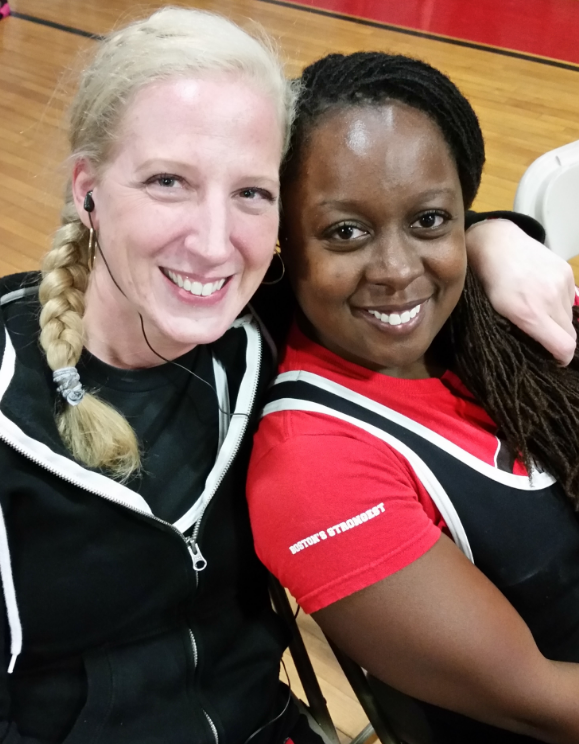
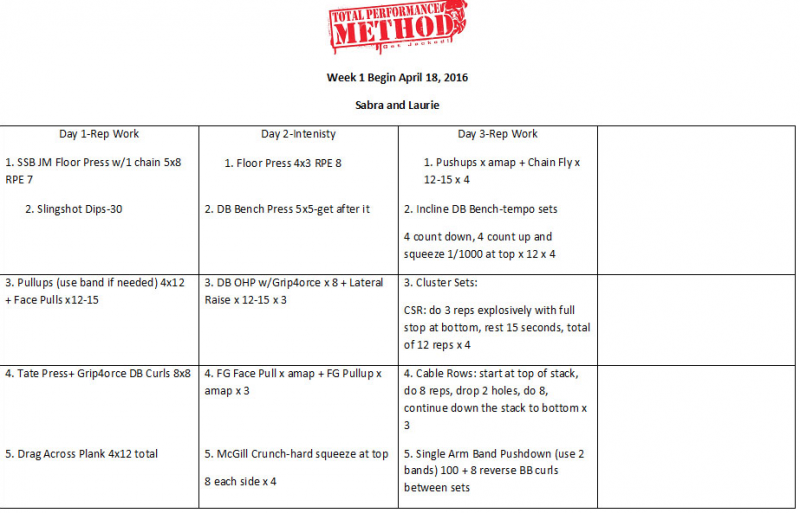
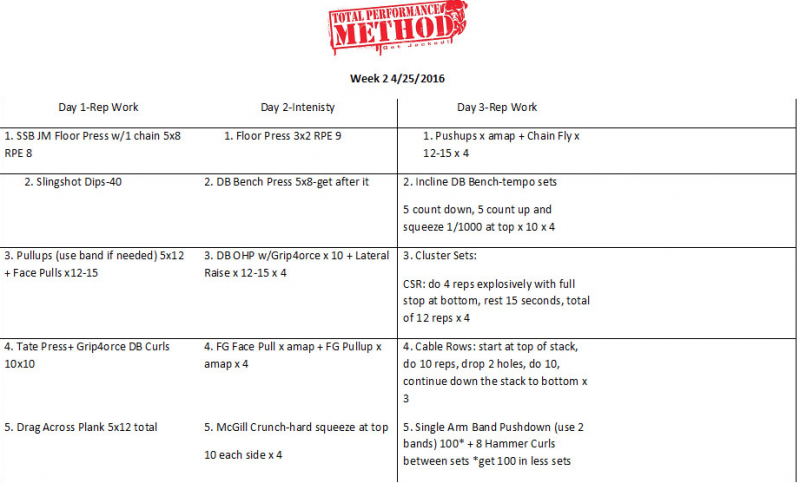
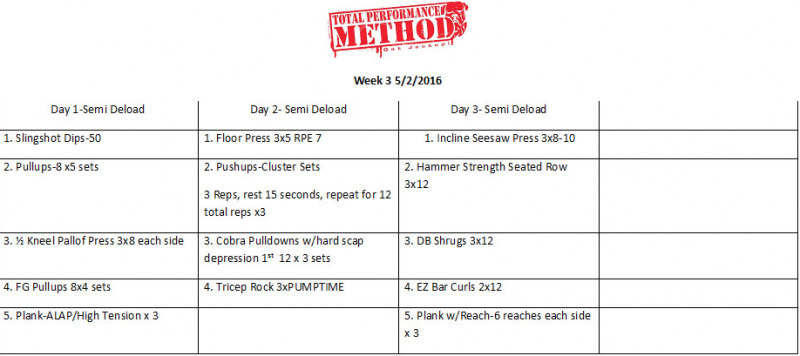
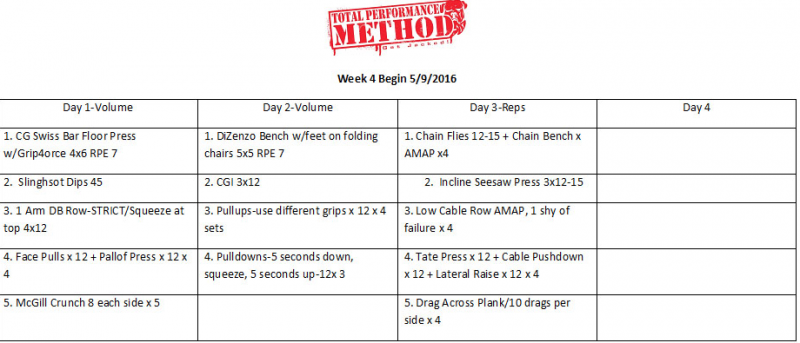
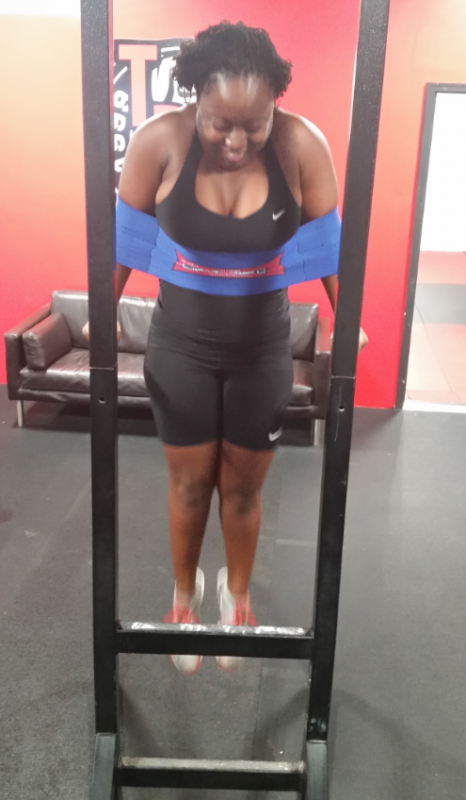
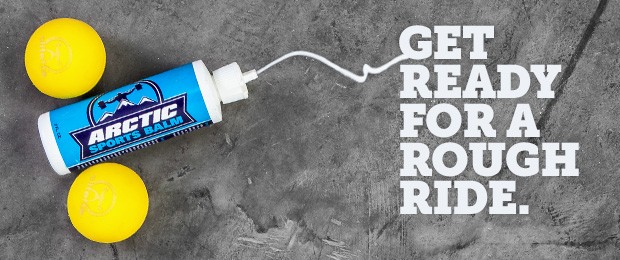
I still got the MRI because I needed to at least have a reason. I don't know that it was a waste, but she was correct. I don't think that Chiro or PT ever even looked at the thing.
More on this topic coming soon.
Vince vel Mori